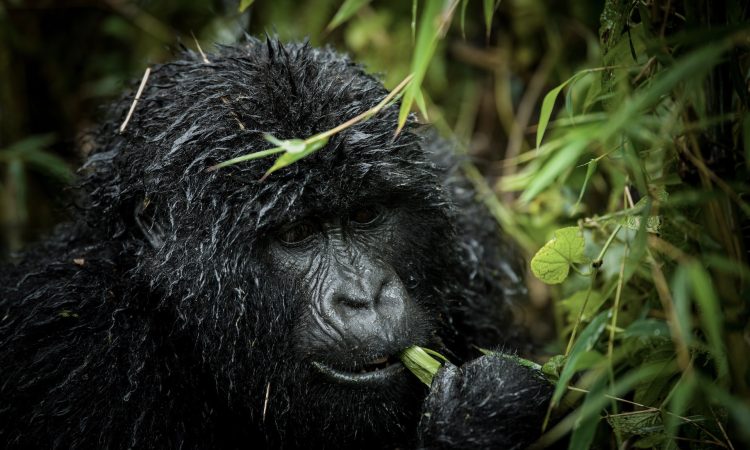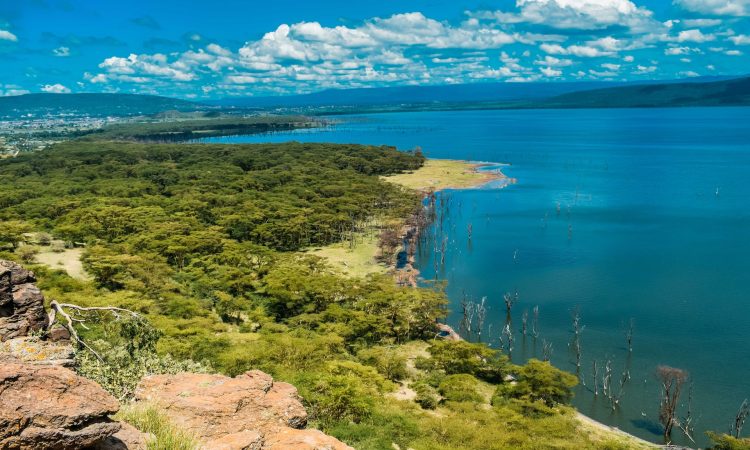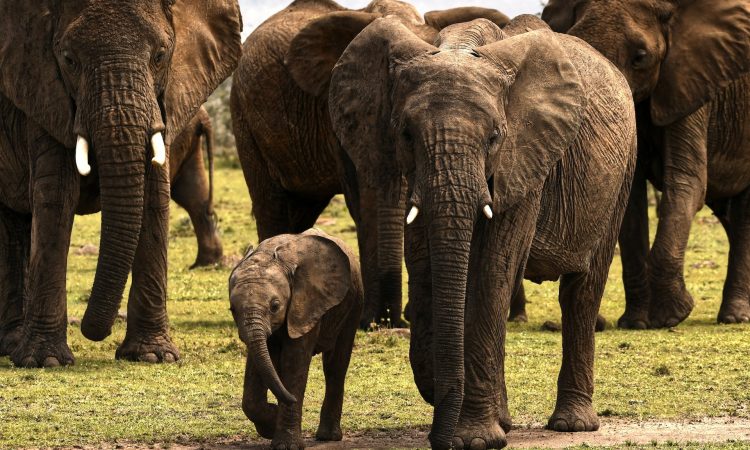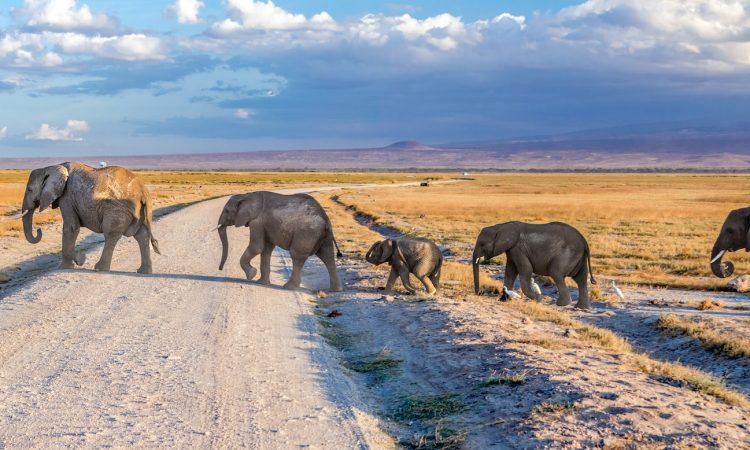Masai Mara, also known as the Mara, is the most visited national reserve in Kenya. The name is derived from the local Maasai people who inhabited the reserve before it was gazetted and who still live in areas surrounding the park to date. On the other hand, “Mara” means “spotted” in the Maa language, due to the trees spread all over the plains.
Masai Mara covers an area of 1,510 square kilometers. The great Wildebeest migration that takes place every year in the Masai Mara is among the top 10 wonders of the world and among the top 7 natural wonders of Africa.
Masai Mara is part of the Mara-Serengeti ecosystem, straddling across Kenya and Tanzania. It has become a field for research of the spotted hyena and some lions.
Entry Fees The entry fees to Masai Mara will depend on whether you’re staying inside or outside the reserve. The fee is $70 for adult foreign non-residents staying inside the main reserve, while those staying outside the main reserve will pay $80. Foreign non-resident children will pay $40 if staying at the main reserve and $45 if staying outside the main reserve. The children’s fee applies to kids of 12 years and below.
East African resident adults will pay KSh 1,200, and their children will pay KSh 500. Kenyan citizen adults will pay KSh 1,000, while their children will pay KSh 300.
The entry fee for vehicles will depend on the number of seats inside the car. Vehicles with less than 6 seats will pay KSh 400, 6–12 seats will pay KSh 1,000, 13–24 seats will pay KSh 3,000, 25–44 seats will pay KSh 4,000, and 45 seats and above will pay KSh 5,000.
History The Masai Mara first began with only 520 square kilometers as the Mara Wildlife Conservancy. In 1961, areas of the conservancy were extended to form a national reserve covering 1,821 square kilometers. Later in 1974, some parts, about 159 square kilometers, were returned to the community, and another 162 square kilometers were added to the community in 1976, leaving the current 1,510 square kilometers.
In the 1960s, Masai Mara had a massive number of rhinos, but uncontrolled poaching in the 70s and 80s led to a total decrease in numbers to only 15 individuals. However, conservation efforts in place have now seen numbers increase slowly.
The Narok County Council managed the park until a new Trans Mara County Council was formed in 1994, and both councils shared park management. The Mara Conservancy was also formed in 2001 to put an end to poaching in the western parts of Masai Mara and embrace conservation.
A non-profit organization known as A Game Foundation introduced the Masai Mara photography competition in 2018 with the aim of marketing Masai Mara and raising funds for conservation initiatives in the Mara region.
The BBC Big Cat Diary television series was filmed in Masai Mara.
Location Masai Mara is situated in Narok County, Rift Valley Province of Kenya, bordering Tanzania, and also borders the Serengeti National Park in Tanzania. You can also fly into the park using domestic chartered flights. The airstrips in the park are Musiara Airstrip, Mara Serena Airstrip, Ngerende Airport, and Angama Mara Airstrip.
Accommodation There are many hotels and lodges to choose from while at the Mara. Some of the accommodation units include Mara Serena Lodge, Little Governors’ Camp, Mara Ngenche, Mara Sopa Lodge, Sarova Mara Game Camp, Talek Bush Camp, Ashnil Mara Camp, Keekorok Lodge, Oltome Mara, Olengoti Mara Safari Camp, AA Lodge Masai Mara, Fig Tree Camp, Crocodile Camp, Mara Sweet Acacia Lodge, Kichwa Tembo Tented Camp, Mara Intrepids Tented Camp, Sanctuary Olonana, Encounter Mara, Ngerende Serian, Naibosho Camp, Porini Mara Camp, and many others.
Animals Masai Mara is well-known for its vast wildlife, and some of the animals found in the park are African bush elephants, lions, impalas, wildebeests, duikers, Coke’s hartebeests, honey badgers, cape buffaloes, bat-eared foxes, aardwolves, African striped weasels, zebras, Masai giraffes, cheetahs, leopards, topis, Thomson’s gazelles, black and white rhinos, hippos, crocodiles, caracals, spotted hyenas, African wild dogs, black-backed jackals, African civets, forest genets, and mongooses, among others.
Best Time to Visit Masai Mara has four main seasons every year, which are two dry seasons and two wet seasons. The reserve can be visited all year round, but the most favorable time is from June to August and December to February.
The best time to visit for tourists interested in the great Wildebeest migration is from July to October when herds are still in the park. It should be noted that the arrival time of the Wildebeest migration from the Serengeti National Park may be delayed or happen early sometimes, but by August and September, the herds are usually in the park before they return in October.
The best time for birding is from November to April when migratory birds are present. The advantage of visiting during the wet season, which is also considered the low season, is that most hotels offer discounted rates, therefore favoring budget tourists.
What to Do
Game Drives Wildlife watching is the most common tourist activity in Masai Mara, and you will never be disappointed by any game drive. The best times for wildlife viewing are early morning or late in the afternoon.
Hot Air Balloon Safaris One of the best ways to enjoy the Mara’s flora and fauna is on a balloon safari. Hot air balloon safaris usually take off at the break of dawn, offering great opportunities for spotting nocturnal animals returning from night hunting. You will also watch a beautiful sunrise over the plains, and the safari ends with a champagne bush breakfast.
Birding Masai Mara National Park is home to 60 species of raptors out of the over 500 species of birds recorded. Some examples found in the park include the African wagtail, common ostrich, black-headed heron, African fish eagle, red-throated tit, Jackson’s widowbird, grey-crested helmet shrike, pallid harrier, Madagascar pond heron, rare shoebill stork, Kori bustard, grey-crowned crane, common secretary bird, great white egret, giant kingfisher, African martial eagle, pygmy kingfisher, Ross’s turaco, pygmy falcon, African finfoot, Denham’s bustard, Schalow’s turaco, silverbird, Swahili sparrow, yellow-mantled widowbird, yellow-throated sandgrouse, woolly-necked stork, white-bellied go-away-bird, Tabora cisticola, saddle-billed stork, rufous-bellied heron, rosy-throated longclaw, lazy cisticola, cinnamon-breasted bunting, African wood owl, and Abdim’s stork, among others.
Visit the Maasai People The Maasai people initially inhabited Masai Mara National Reserve and coexisted with wildlife for many years until they were evicted when the reserve was formed. The Maasai warriors have now indulged in the conservation of Masai Mara by creating conservancies to protect wildlife. The Maasai have a very distinctive culture and are famous for their patterned sheets and colorful beads. Visit the Maasai villages around the reserve to support the locals and learn about their way of life. Enjoy traditional dances and perhaps participate in their day-to-day life. Remember to buy Maasai jewelry to take back home as a souvenir or as gifts for your loved ones.
Night Game Drives You can also take exciting night game drives at private conservancies in the Mara, which start at 6 pm. The night game drives give visitors an opportunity to spot nocturnal animals like hyenas and leopards, as well as night birds like nightjars and owls.
What to See/Attractions
Wildebeest Migration The Wildebeest migration is one of the most spectacular natural wildlife wonders in the world and the reason why many visit Masai Mara National Reserve. The migration involves millions of wildebeests, thousands of zebras, gazelles, and other antelopes being tracked by predators like lions, leopards, hyenas, and cheetahs. They move from Serengeti National Park to Masai Mara Game Reserve, crossing the Grumeti and Mara rivers where crocodiles and hippos lie in wait for a meal. The migration is beautiful to behold and shouldn’t be missed on your bucket list for Africa.
Mara River The great Mara River, shared with Kenya and Tanzania, is the main water source for wildlife in the Masai Mara, even during the dry season. It has also been nicknamed the “river of death” because it lies in the path of the great Wildebeest migration, where the spectating drama happens with thousands of crocodiles waiting to capture prey. The Mara River has some of the largest concentrations of Nile crocodiles in the world and is also home to a number of hippos.
Lions Masai Mara has a high-density population of lions, making it one of the top places for lion habitats in Africa. There is an estimated number of over 3,000 lions living in Masai Mara.
Mara Conservancies There are about 14 conservancies at Masai Mara that provide unique wildlife experiences for travelers. These are privately owned conservancies by the Maasai people who have given up their grazing land to protect wildlife, as some of these areas were wildlife corridors.
Featured in: Kenya Attractions, Kenya Information







